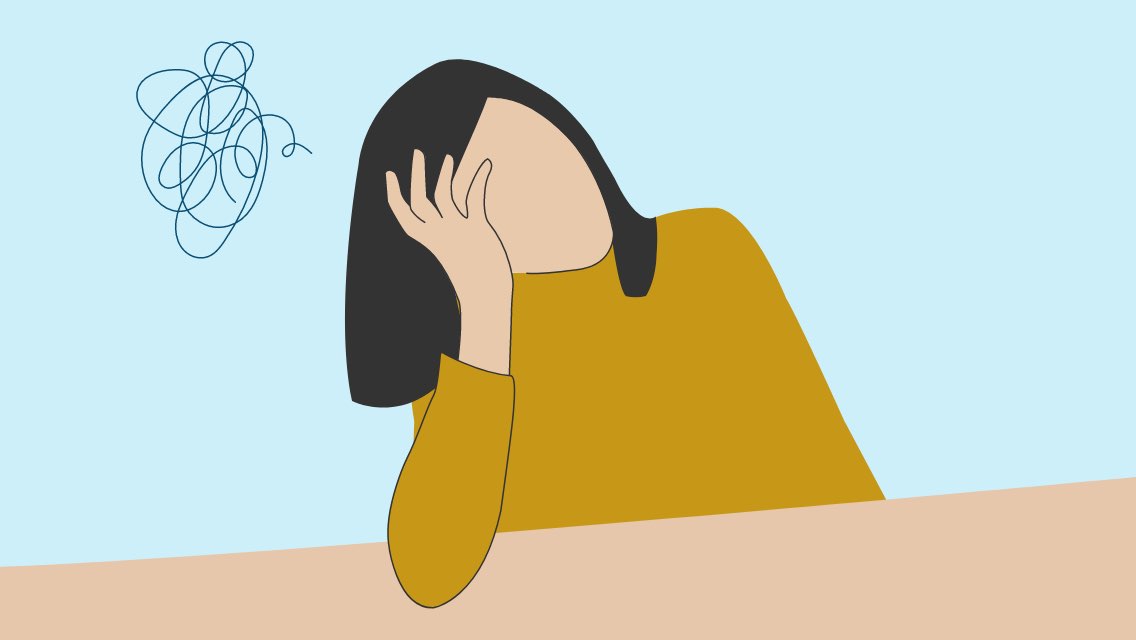Editor’s Note:
When we received a copy of Harvard Medical School associate professor David H. Rosmarin’s new book, Thriving With Anxiety, we couldn’t believe what we were reading. Embrace anxiety instead of treating the symptoms? Anxiety as a means to develop emotional resilience, greater closeness in relationships, spiritual growth? Where are the tips and tricks for creating serenity and calm? What is going on here?
Anxiety rates have been high in the United States for some time, and they only increased during the COVID-19 pandemic. At the time of this writing, about 29 percent of American adults report symptoms of anxiety — up from 17 percent prior to the pandemic. In 2022, around one in 10 prescriptions was for drugs to treat anxiety or depression; still, the experience of anxiety remains stubbornly widespread. There’s something about treating this condition we still don’t understand.
That is what makes Rosmarin’s thesis so intriguing. What happens, he asks, when we turn toward our anxiety rather than try so desperately to make it go away? In this article, he shares the story of a patient who did just that. We think you’ll be as relieved as we were to discover what happened.
— Courtney Helgoe, Experience Life features editor
When Harold came into my office at the Center for Anxiety, he had one objective: getting rid of his panic attacks. “I’ve been suffering from them on and off for years,” he told me. “But now they’re getting worse.”
Harold’s desire made sense. He was an emergency medical technician (EMT). Day after day, the most vulnerable people in the most urgent situations depended on his care. The pressure in the back of an ambulance is intense. He couldn’t afford to mess up.
On top of dealing with the panic attacks, Harold was worried about his physical health. He was intensely nervous most of the time, and he wondered whether his racing heart, rapid breathing, and profuse sweating might signal a heart condition.
For all these reasons, my response surprised him. “Harold, I’m not going to help you get rid of your panic attacks.”
But, I told him, if he was open to it, I could help him learn to embrace his panic instead.
Harold looked both bewildered and irate. Still, he didn’t flee. So I went on to point out that panic does not impair our functioning, nor is it dangerous.
“Think about it,” I suggested. “In your EMT training, did they ask you whether you had epilepsy or another neurological condition that could impact your work?”
“Yes,” Harold responded.
“Did they ask you about whether you need corrective lenses?”
“I believe they did,” he said.
“What about panic attacks? Did they ask you about this?”
Harold stopped and thought before answering. “No, they did not.”
“Why is that?” I asked rhetorically.
Before Harold could answer, I chimed in: “Because panic isn’t dangerous. Case in point: You’ve had panic for years, and never — not once — have you ever had an incident on the job, even when you were super uncomfortable. Furthermore, your primary-care physician referred you to my office after ordering an electrocardiogram, so we know that your heart is fine.”
Harold still looked confused: “But it’s so uncomfortable! Are you saying you can’t help me?”
“Anxiety can help us enhance our relationships with ourselves and others and even grow spiritually if we want to.”
I let Harold settle down before telling him I could help him — it just wouldn’t involve trying to stamp out his panic.
“The first thing you need to understand is that squelching your symptoms will make things worse,” I explained. “By the time we’re done, I think you’ll find that your panic is a blessing that helps you to thrive in your life. Anxiety can help us enhance our relationships with ourselves and others — and even grow spiritually if we want to.”
Harold was skeptical but intrigued. He agreed to give my approach a try.
Tolerating Uncertainty
I met with Harold twice over the next week, and we talked at length about the current state of anxiety in our society:
- Before the pandemic, about one in six American adults was experiencing anxiety.
- By October 2023, that number had increased by 80 percent — closer to one in four.
- In many middle-income countries, such as Mexico, people experience anxiety at roughly half the rate of people in high-income countries, like the United States. And anxiety is only half as prevalent in low-income countries as it is in middle-income countries.
I noted how anxiety seems to increase alongside technological and economic advancement and shared my theory about this correlation: Having resources may make us more intolerant of situations that are uncertain and uncontrollable. The more agency and control we expect to feel every day, the less we’re seemingly able to handle feeling unmoored and anxious.
Harold caught on right away. “In the United States, we often don’t have control and our predictions are often completely wrong,” he said. “But, unlike other areas of the globe, we expect to feel calm all the time.”
He was beginning to understand that anxiety itself is not the main problem: It’s a normal, even healthy, human response to threat.
Anxiety itself is not the main problem: It’s a normal, even healthy, human response to threat.
And in Harold’s line of work, it made perfect sense that he felt anxious as he faced his patients’ life-threatening situations.
The main problem is that we expect to be anxiety-free. This expectation is neither realistic nor productive. It also prevents us from growing stronger.
Growth requires us to tolerate discomfort. When we go to the gym, we understand that some soreness can be a side effect of building new muscle tissue and increasing our strength. Likewise, when we’re handed a major project at work on a short deadline, we expect to sleep less, eat less, and shower less while we dedicate ourselves to getting it done. If we love our work, we may even revel in temporarily feeling tired, hungry, and sweaty as symbols of our dedication.
We can choose to take the same approach with anxiety. When we release our expectation of perfect calm and learn to tolerate anxiety’s discomfort, we build strength and resilience. This is just the first of its gifts.
Panic Training
Over the next month, Harold and I met weekly for “exposure therapy.” This involves deliberately facing one’s fears instead of trying to tamp them down.
In this case, we helped Harold to panic. Intentionally. Repeatedly. At a higher level than he had ever panicked before. He raised his heart rate to nearly 200 beats per minute by doing jumping jacks in the office. He breathed through a tiny coffee straw to deprive himself of oxygen. We turned on a space heater so he was sweating from every gland in his body.
This was not pleasant for Harold, to say the least. But by the end, he felt emotionally stronger than ever. “I feel like I just did anxiety boot camp!” he reported.
As his mind and body became more tolerant of anxiety-related sensations, these feelings began to lose their power to frighten him. He experienced firsthand that panic isn’t dangerous — even for his heart, which was his original concern.
“When I have low-level symptoms of anxiety, like a heart flutter, a bit of sweat, or a small increase in my breathing rate, I now instantly see it as just a part of being human on the job.”
“Before this part of treatment, I had a nagging fear in the back of my mind that panic meant an impending heart attack,” Harold said. “Now I know in my gut that anxiety has nothing to do with the health of my heart. In fact, my heart rate can go a lot higher than I ever thought it could!”
Ironically, by the end of our seventh session, Harold was largely panic-free. Even though his work was particularly stressful during this time, he had not had any panic attacks. What’s more, he was able to identify how his thinking had changed.
“When I have low-level symptoms of anxiety, like a heart flutter, a bit of sweat, or a small increase in my breathing rate, I now instantly see it as just a part of being human on the job,” he reported. This recognition had replaced his former catastrophizing and self-judgment for feeling anxious.
As a result, his panic didn’t spiral out of control anymore — and he no longer lived in fear of his own fear.
Thriving With Others
Had Harold stopped coming to therapy at this point, our time together would have been a clinical success. By rethinking, embracing, and conquering his anxiety, he had successfully rid himself of panic attacks.
But when I shared with Harold that his anxiety could also lead him to have deeper relationships with others, he decided to continue for a few more sessions.
Before becoming an EMT, Harold was in the military. Like most soldiers, he was trained to keep his emotions to himself. He carried this stoicism into his ambulance work, where most of his colleagues conducted themselves the same way. As it happens, one of the foremost triggers for his panic attacks was a fear that his coworkers might notice his anxiety.
Harold also kept his emotions to himself in his marriage. His wife, Natalie, had long complained of his emotional distance. Harold acknowledged she was right about him not sharing his feelings — but he didn’t know where to start.
“Have you ever spoken with Natalie about your panic?” I asked.
Silence filled the room. I repeated the question.
“Well, not exactly,” he allowed. “Once, I told her that I thought I had a heart condition, but she doesn’t even know that I came for therapy.” Harold hung his head.
“Is there a reason you didn’t tell her? Are you afraid of anything?” I asked. He couldn’t come up with any examples, but he did say he thought Natalie might lose respect for him if she knew about his panic attacks.
I suggested he might have this backward.
“From what you’ve shared with me,” I told him, “my hunch is Natalie will love you more and feel closer to you if you tell her you’ve experienced panic disorder. She will cherish that you trusted her to show your vulnerability — a side of you that you don’t share with others.”
Harold was silent again, but he seemed ready to learn whether it was true.
When Harold finally spoke with Natalie about his panic, she did not judge him. As I suspected, she more easily relaxed around him when he shared his vulnerability, and this created more tender, loving moments in their home. The couple started to connect emotionally more than ever.
Harold soon began to open up about other issues. He shared his feelings about work, their mutual friends, and even his childhood — feelings that he had never discussed with Natalie before.
In turn, she felt more confident sharing her feelings, which gave Harold the chance to be present for her emotionally. Notably, without any direct intervention, the couple also experienced heightened sexual connection in their marriage, with increased confidence and closeness in their intimacy.
Harold discovered for himself how being humbled by his anxiety instead of hiding it could make him capable of new levels of emotional and physical closeness. This can happen for all of us when we share our struggles with loved ones instead of concealing them to protect our pride.
Thriving Spiritually
Now that Harold was free of his panic attacks and feeling much closer to Natalie, he was motivated to learn more. He asked me about my work on spirituality and mental health, and how his panic might be related.
Harold and I revisited the core of anxiety:
So many aspects of life are beyond human knowledge and control. Like it or not, uncertainty is part of our limited and humble existence. Sometimes we will be overwhelmed, overburdened, or distressed, and feel as if we are floating through the universe without agency.
Oddly enough, this doesn’t always mean there’s something wrong.
Harold’s eyes opened wide as I spoke. “That’s exactly how I felt when I would have panic attacks. It was as if the world was swirling around me, and I was caught in the middle, powerless and completely uncertain about the future.”
I encouraged Harold to frame this experience in a spiritual light. Specifically, I wanted him to see how anxiety is part and parcel of the human experience — because we are not meant to be in control all the time. “It’s a good thing to learn to accept the limits of our control,” I told him.
Like it or not, uncertainty is part of our limited and humble existence. Sometimes we will be overwhelmed, overburdened, or distressed, and feel as if we are floating through the universe without agency.
Then we took this a step further. A lack of control, and the resulting anxiety, is a natural human experience. The point is not to suppress this experience — but to learn to feel anxious without letting it paralyze us.
Anxiety, I explained to Harold, does not have to be a barrier to achieving our life goals and dreams.
“On the contrary,” I offered, “I’ve never met anyone who achieved their goals without overcoming significant anxiety along the way. That’s because to push past our perceived limits, we invariably face adversity and challenge — which cause anxiety.”
At our next session, I asked Harold if he had any unrealized dreams or ambitions. At first, he seemed shy to respond. Like so many of us, he was anxious about his aspirations and didn’t want to speak about them.
But eventually he told me that he wanted to complete a college degree. Harold’s parents were immigrants from Mexico, and neither had finished high school. His own high school diploma was a big accomplishment, as was his acceptance into the military and completion of an EMT certificate. But he had always dreamed of being the first member of his family to attend college.
Before our next session and without prompting, Harold had looked up evening degree programs at a local community college. And he looked completely overwhelmed and exhausted.
“What’s wrong?” I asked.
“It’s just too much,” he responded. “I can’t do it!”
“You mean, you feel anxious about applying to college?” I asked.
He nodded.
“Does that mean that this is a good idea or not a good idea?” I asked.
Harold smiled. Then he said, “The fact that I’m anxious probably means that I should apply.”
The Journey On
Harold and I keep in touch to this day. He has long since finished his college degree. Like all of us, he still becomes overwhelmed at times, but he now understands how to thrive with anxiety.
When his panic mounts, he accepts these feelings as par for the course rather than as an indication something is wrong. He then identifies and confronts his fear instead of avoiding what makes him distressed.
The point is not to suppress this experience — but to learn to feel anxious without letting it paralyze us.
Harold speaks regularly with his wife about his feelings and has opened up to some of his friends (and even a coworker). He’s learned that showing his struggles can deepen his connections.
Finally, Harold doesn’t choose to shy away from challenges that make him anxious. His college experience reinforced his understanding that achieving goals requires accepting, tolerating, and facing uncertainty. Anxiety is just something that happens along the way.
Anxiety is not Harold’s enemy. On the contrary, learning to tolerate it instead of squelching it has helped enhance his connection with himself, his wife, and the world at large.
And this can be true for any one of us willing to face anxiety with curiosity and courage.





This Post Has 0 Comments